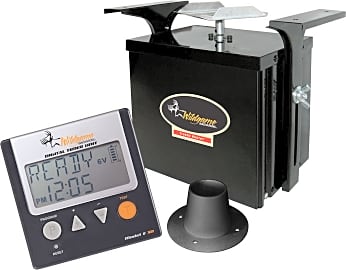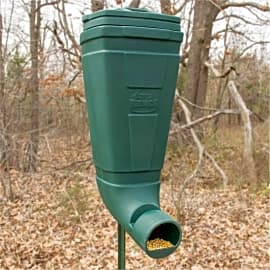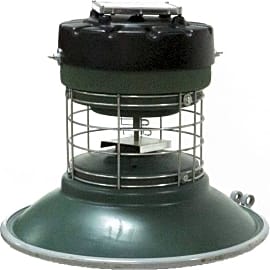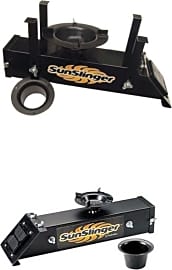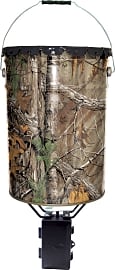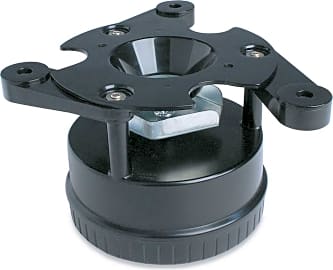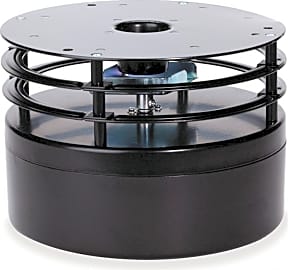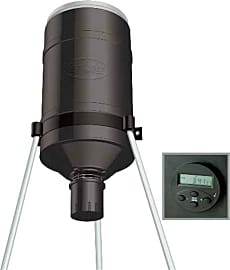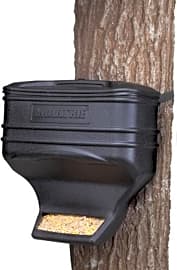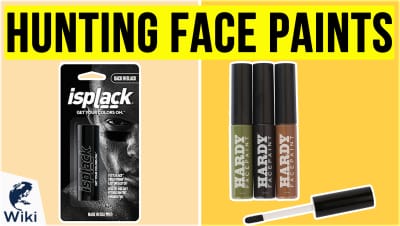The 10 Best Game Feeders

This wiki has been updated 41 times since it was first published in October of 2015. These game feeders allow you to either distribute food on a set schedule according to your programmed specifications or let animals eat from them whenever they want to. They are designed to attract deer and other prey to your hunting area on a consistent basis so that when the season arrives, there will be plenty of targets to choose from. They are available in a variety of versatile designs. When users buy our independently chosen editorial choices, we may earn commissions to help fund the Wiki.
Editor's Notes
June 30, 2020:
Looking over the offerings in our last ranking, we decided that a pair of hanging options, one by American hunter and the other by Big Game Hunter, should be replaced. Simply put, the Wild Game Innovations Real Tree outperformed both of them for its simplicity and its camouflaged exterior. And considering the wide variety of feeders on the market, it didn't make sense to keep all three hanging options if one would do the job the best.
To that end, it's worth pointing out the tremendous amount of options out there, from hanging models like we mentioned to tripod feeders, drum-top spreaders, and models that strap to tree trunks. There isn't always necessarily a perfect fit for one animal, as critters can be strangely finicky, but it is worth noting some benefits and drawbacks of each type. Tripod models like the Moultrie Elite and the American Hunter Digital, for example, can be susceptible to high winds. The Moulrite fared better in our ranking for its ability to be easily staked to the ground to add stability. Tripod and drum feeders have the benefit of restricting access to your feed by varmint or bears, but it's crucial for you to understand that even though open tree-strapped models leave more food exposed and are probably more likely to attract bears or rodents, no system is impervious to determined critters or the surprising intelligence of bears.
Choosing A Great Game Feeder
Also always consider the benefits of a game feeder with a time release option.
A game feeder is one of the best ways a hunter can lure deer. Once properly set up and filled with the right feed, game feeders can consistently attract deer to the location of your choosing, and can even help to bring deer at predictable times of day.
Using a game feeder is relatively simple in concept: all you have to do is follow the directions to build the feeder, top it off with an appropriate feed, and then wait for the animals to show up and dine. In practice, there is a fair amount to learn about proper placement and best use of these units, though. And the process starts with choosing which game feeder will best serve your needs.
The first consideration to be made is what feed storage capacity you hope to get from your game feeder. Many game feeders can hold as much as 400 pounds of feed and will require infrequent refilling even in areas with large deer populations. These larger feeders are good choices for many reasons, with perhaps the best attribute being their limited need for visits by humans. The less often you go to your feeder, the more comfortable deer will be claiming the feeder and the area around it as safe territory. The biggest drawback to these bigger feeders comes in terms of price. Many larger feeders cost several hundred dollars.
Smaller game feeders can attract deer just as well as their more sizable counterparts, and even offer some benefits over bulkier units. A smaller game feeder is much easier to move about even once filled with feed, so you can try several locations before committing to one spot where you will leave the feeder and set up your hunting blind.
A smaller game feeder also allows you to be more adaptable given the other wildlife in the area. If you conduct your deer hunts in areas known to be home to wild turkeys and ubiquitous small animals such as mice and squirrels, then feeder placement is as or more important than capacity anyway. Consider a hanging feeder that can be hung too high for turkeys or small mammals but which can be accessed by a deer.
Also always consider the benefits of a game feeder with a time release option. Many modern feeders have built in digital timers that allow you to precisely program a feed release time (or several times) and these options can help you work with the local deer populations natural patterns and can help you control their behavior to some extent.
Placement And Patience: Using Your Game Feeder Properly
One of the most common questions hunters have about game feeders is how long it will take for deer to start eating the food they provide. While there is no set answer to this question, as it can vary greatly based on factors including the numbers of local deer, the other wildlife in the area, the season, and so forth, the short answer is that it will take a while before most deer start to regularly use your game feeder.
One of the most common questions hunters have about game feeders is how long it will take for deer to start eating the food they provide.
Deer are naturally cautious and are highly observant; it will take them time to accept this new feature of the landscape as trustworthy. Many hunters set up a deer camera rather than spending days (or weeks) huddled in their blind waiting to see if the deer are starting to show up.
Once the deer do embrace a game feeder, however, it can be common to see more than a dozen animals milling about near one unit. The hunter's patience will pay off. Proper feeder placement can speed up the process, and can lead to a more rewarding hunt later.
A deer feeder is always best setup in a clearing or near the edge of a field. If you cut your own shooting lane, then place the feeder in clear sight of your blind but at a good distance away, as you are installing two new features with which the animals must become comfortable. If you hunt in an area near a field or large clearing, then by all means set it up just outside the forest line.
And make sure to check for jams now and then; a stalled feeder can't properly lure in animals and may even frustrate them. Also periodically check to make sure your feed is still dry after rains or excessive humidity or dew.
A Few Words On American Deer
There are three species of deer to be found in the United States. The White-tailed, the Coastal Blacktail, and the Mule. White-tailed deer are by far the most common subspecies, thus will be the focus here. These deer have a population numbering at an estimate of nearly 30 million animals today; this figure represent a dramatic recovery, as one hundred years ago, before hunting restrictions were put in place, the deer population of the Unites States hovered at only around 500,000 animals in total.
White-tailed deer can be found in all 48 of the continental states, though their main area of concentration is in the eastern areas of the country.
White-tailed deer can be found in all 48 of the continental states, though their main area of concentration is in the eastern areas of the country. They can also be found ranging well north into Canada and have populations across Mexico, Central America, and well into much of the South American continent.
Male White-tailed deer, called bucks, usually weigh around 100 pounds at maturity, though can often enough be found weighing in at twice that figure. Rarely, bucks will reach massive sizes, weighing in at 400 pounds or more. Females, known as does, tend to weigh between 100 to 200 pounds as well. A captive White-tailed deer's lifespan is generally between six to fourteen years; in the wild, few male deer live beyond three years.


